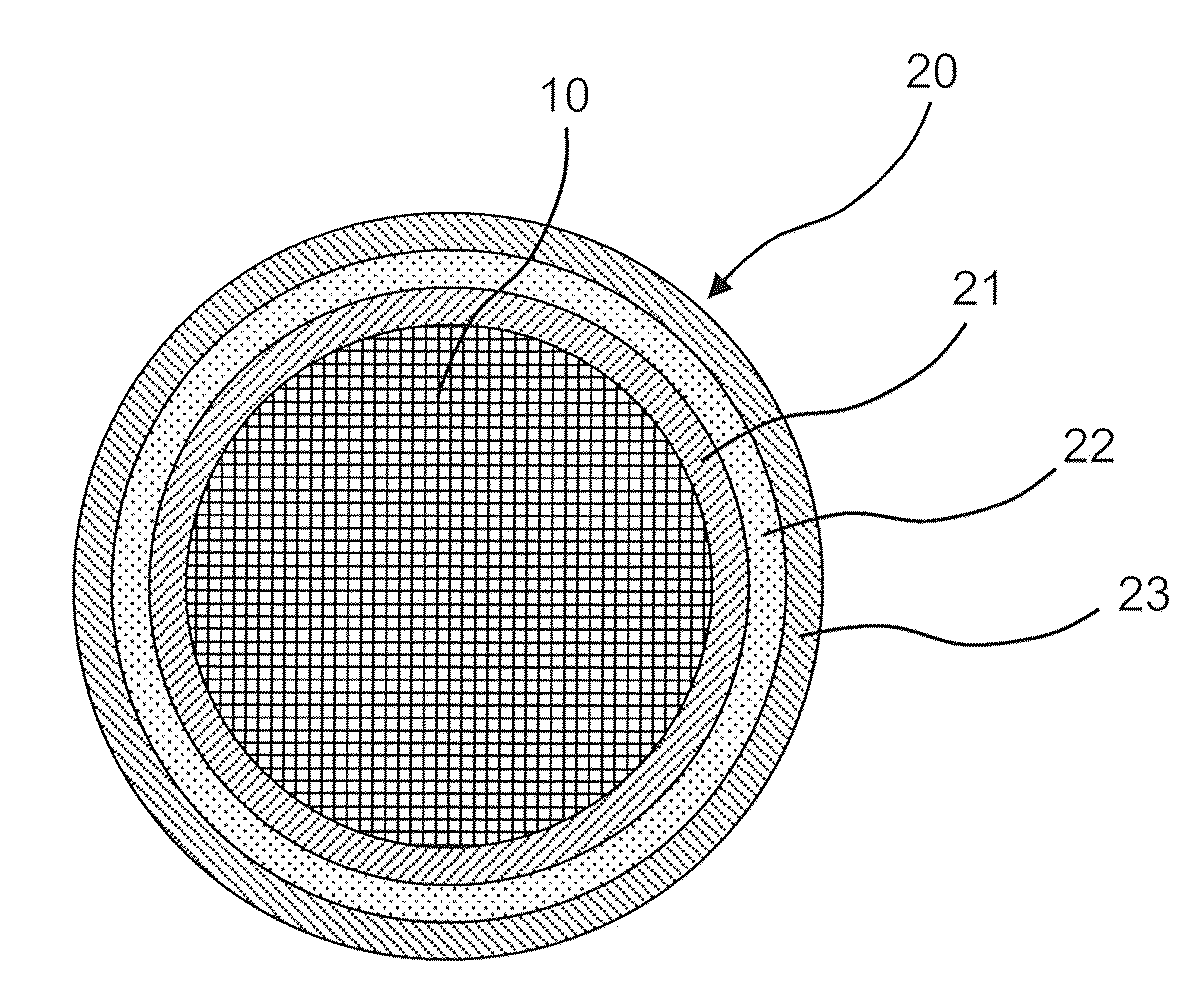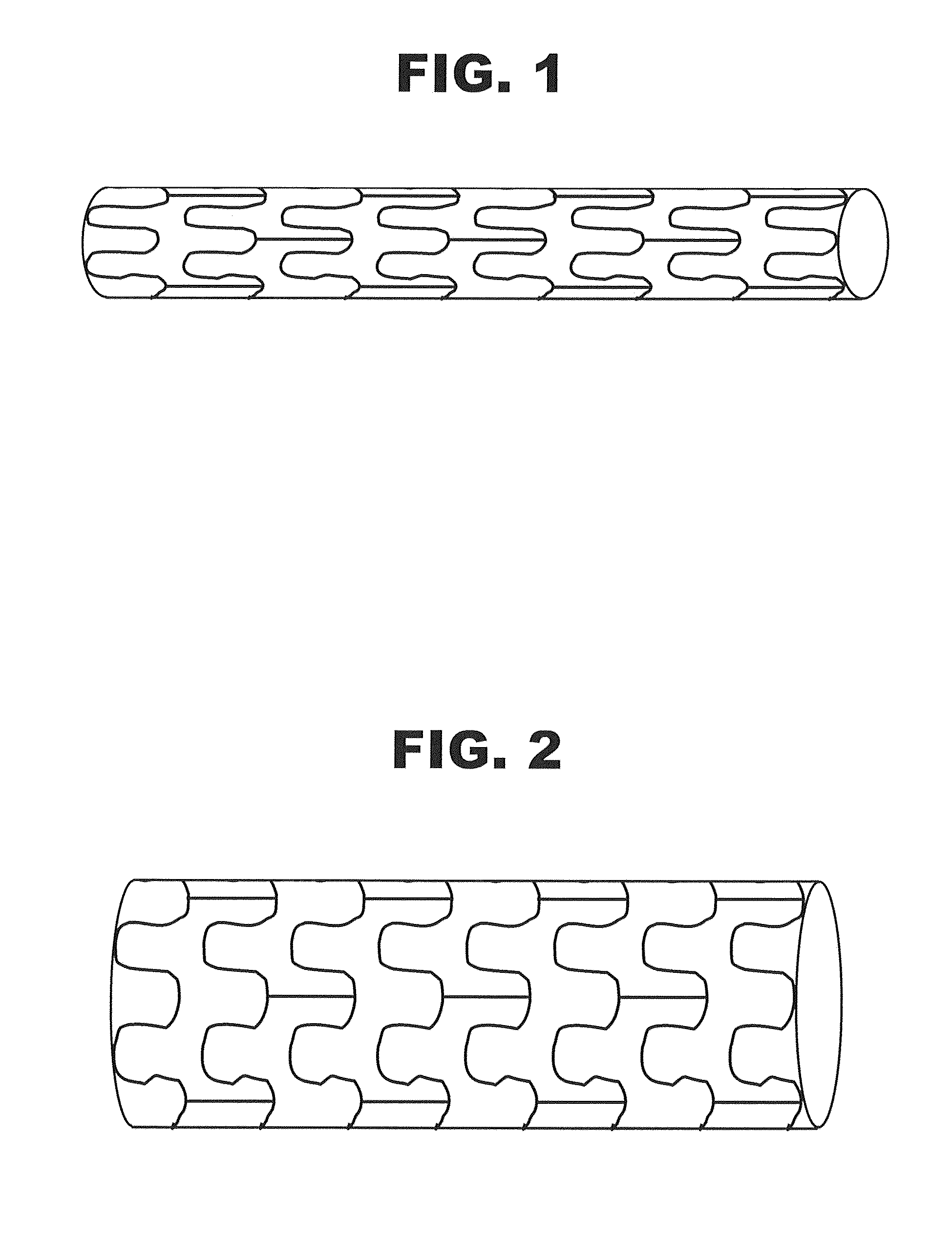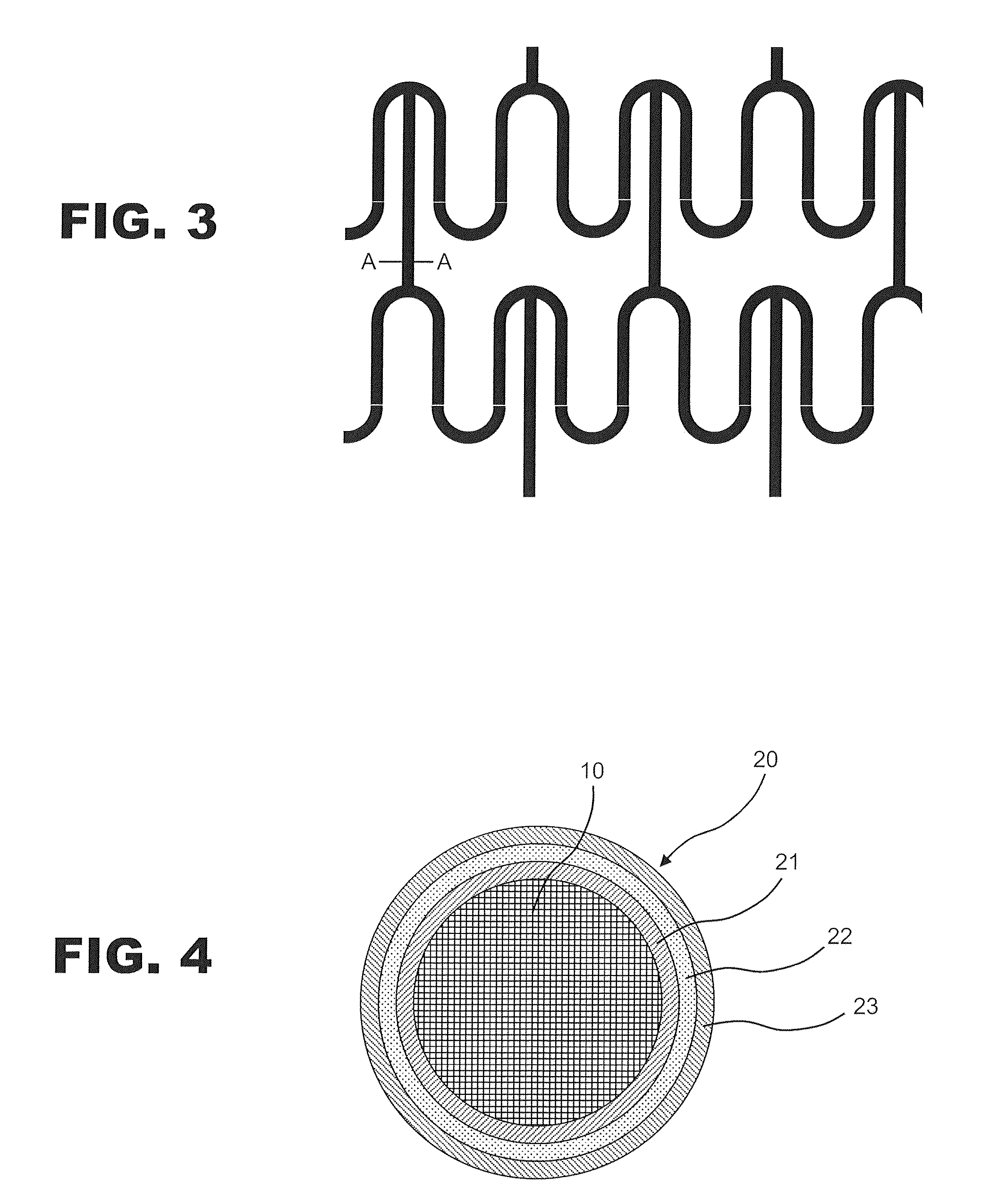Vascular stent
a vascular stent and stent technology, applied in the field of vascular stents, can solve the problems of cardiac infarction, under-myocardium, and so on, and achieve the effects of reducing the adhesion between a plurality of layers, preventing cardiac infarction, and preventing cardiac infarction
- Summary
- Abstract
- Description
- Claims
- Application Information
AI Technical Summary
Benefits of technology
Problems solved by technology
Method used
Image
Examples
example 1
Inhibition of Cell Adhesion by Modified Gelatin
[0091]The amino groups of the lysine groups in the gelatin may be converted to a succinated form by means of succinic acid anhydride, with the result that the pKS value of the gelatin material of 8 to 9, as is found for the unmodified gelatin, is lowered to ca. 4.
[0092]A further possible way of modifying the gelatin is to convert the amino groups of the lysine groups to dodecenyl-succinyl groups. The pKS value in this case is reduced to ca. 5 and at the same time a slight hydrophobing of the gelatin by the fatty acid group occurs.
[0093]In both cases, the cell adhesion with regard to a gelatin treated in this way decreases markedly, which is demonstrated in the tests described below using the example of porcine chondrocytes.
[0094]The degree of conversion of the lysine groups of the modified gelatin is preferably 30% or more. In the case of the dodecenyl-succinated gelatin degrees of conversion of 40 to 50% are often eminently sufficient,...
example 2
Promotion of Angiogenesis
[0101]The following example is intended to demonstrate the local angiogenesis-promoting effect of gelatin-based materials.
Manufacture of Films from a Gelatin-Based Material
[0102]Gelatin films having three different degrees of cross-linking (films A, B and C) were manufactured by means of a two-stage crosslinking process.
[0103]For each of the three batches 25 g of pork-rind gelatin (300 g Bloom), 9 g of an 85 wt. % glycerine solution and 66 g of distilled water were mixed and the gelatin was dissolved at a temperature of 60° C. After ultrasonic degassing of the solutions, for carrying out the first crosslinking step an aqueous formaldehyde solution (2.0 wt. %, room temperature) was added, namely 3.75 g of this solution to batch A and 6.25 g of the solution to each of the batches B and C.
[0104]The mixtures were homogenized and applied at ca. 60° C. with a doctor blade in a thickness of ca. 250 μm onto a polyethylene support.
[0105]After drying at 30° C. and a r...
example 3
Time-Dependent Separation Behaviour of a Plurality of Layers of a Gelatin-Based Material
[0114]In order to enable qualitative and quantitative determination of the time-dependent separation behaviour of a plurality of layers of a material based on crosslinked gelatin, the test described below was carried out.
[0115]In order to facilitate visual evaluation, the carrier used here was not a lattice frame of a stent but a flat polyethylene support, onto which two layers of the resorbable material were applied over a large area. Resorbable materials of the same composition may be applied within the framework of the present invention onto the surface of a carrier of a vascular stent according to the invention.
[0116]In order to be able to see the difference between the two layers of the resorbable material in the test, the first layer was dyed with a white pigment (titanium dioxide) and the second layer with a red food dye (Candurin Wine Red). For the same reason, layers of a greater thickne...
PUM
| Property | Measurement | Unit |
|---|---|---|
| thickness | aaaaa | aaaaa |
| pH | aaaaa | aaaaa |
| diameter | aaaaa | aaaaa |
Abstract
Description
Claims
Application Information
 Login to View More
Login to View More - R&D
- Intellectual Property
- Life Sciences
- Materials
- Tech Scout
- Unparalleled Data Quality
- Higher Quality Content
- 60% Fewer Hallucinations
Browse by: Latest US Patents, China's latest patents, Technical Efficacy Thesaurus, Application Domain, Technology Topic, Popular Technical Reports.
© 2025 PatSnap. All rights reserved.Legal|Privacy policy|Modern Slavery Act Transparency Statement|Sitemap|About US| Contact US: help@patsnap.com



